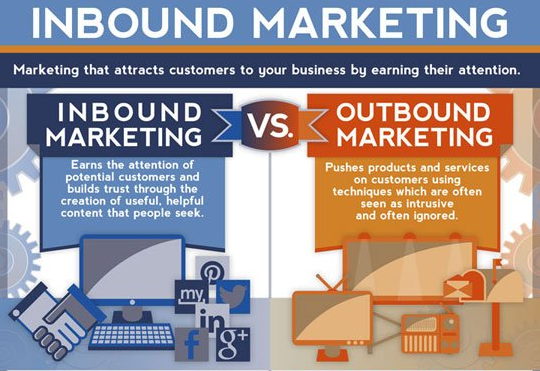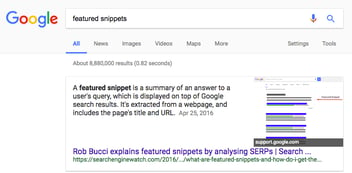
What is inbound marketing?
It’s easiest to think of inbound marketing in contrast to “outbound” marketing. In the outbound model, a business sends out messages to a broad audience (such as radio, TV, or print ads) in hopes of reaching customers. Inbound, by contrast, is aimed at helping consumers find the business through their own research. This is accomplished largely through search engine optimization (SEO) practices with support from a consistent stream of online content that the company’s ideal customers value.
How does it fit how consumers buy?
A recent study by BigCommerce found that 96% of Americans shop online. And, while the vast majority of purchases are made offline, many consumers prefer to research products and services online first before visiting a store or reaching out to a sales rep. It stands to reason, then, that if your potential customers find your website full of valuable information, you’ll gain a significant advantage when it comes time for them to make a buying decision. Because inbound marketing focuses on drawing customers to your site and providing them with information they’re seeking, it fits perfectly with the way consumers buy today.
SEO
Rank is critical to click-through rate (CTR) on Google results pages, particularly when users are intentionally searching for specific information or shopping online. While first-position ranking in organic search results averages around a 30% click-through rate, second position fares about half as well with about 15%, and positions three through five descend from around 10% to 5%. Once a link is pushed to page two, CTR drops below 1%. With Google processing trillions of searches every day, your business can’t afford to miss out on the website traffic it can deliver.
Optimizing your website for search engines involves some technical tweaks, such as ensuring your page titles, meta descriptions, header tags, and image alt text are properly constructed. The larger part, however, is creating a steady stream of fresh content that is enticing to your ideal buyers. To do this, you’ll want to do some keyword research to find out what information your prospects are searching for online and then produce content that provides high quality responses to those specific searches. The easiest way to do this on an ongoing basis is with a business blog.
Lead Generation
Inbound marketing doesn’t end once visitors arrive at your website; it’s just getting started! On each page of your site, including on each blog post, calls to action should be strategically placed to show users the next steps to take to get more information, schedule a consultation, get a quote, or take advantage of a special offer. When a user clicks on one of these calls to action, they can be led to a landing page that contains a brief form, where they can provide some basic contact info in order to complete the action they’ve selected. When they do, voilà! You’ve got a lead!
Lead Nurturing
Once you have leads, you can nurture them into becoming customers with additional communications. Automated emails can be an easy and effective way of keeping the conversation going. Don’t think that “automated” means one-size-fits-all, however. Some inbound marketing applications will allow you to segment your contact list so you can send different emails to your various buyer personas based on their needs and interests as well as structure email sequences that lead your prospects through the buyers’ journey in a logical way.
Supporting Campaigns
Social media can be a great supplement to any inbound marketing campaign. With the growing range of social media platforms available to appeal to a wide variety of demographics, including Facebook, Twitter, Google+, Instagram, YouTube, Pinterest, LinkedIn, Snapchat, and others, your prospects are certain to be on at least one of them (and probably more). Use those platforms to publicize new content you produce (or high-performing content that you’ve had for a while), advertise promotions, and encourage customer engagement to enhance awareness of your brand and build your online reputation.
If you’d like help designing and implementing an inbound marketing strategy to build your business, contact Blue Frog! Our HubSpot-certified inbound marketing experts are at your service. Click below to request a free consultation!


